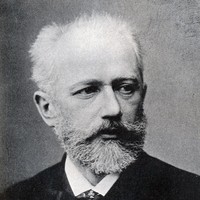Tchaikovsky’s Serenade for Strings


 Watch Video
Watch Video
Wolfgang Amadeus Mozart spent much of his youth traveling through Europe and performing in circumstances arranged by his enterprising father, Leopold. Their last major trip together took them through Italy for over a year, until they returned to Salzburg in December of 1771. This period marked a turning point for Mozart, for at fifteen he was getting a little old to be paraded around by his father as a child prodigy. During the next years in Salzburg, despite tensions with a new Archbishop (who controlled the court’s musicians) and an uncertain professional future, Mozart composed mountains of music, and in the process he matured from a precocious youth to the genius we now recognize.
About half of Mozart’s symphonies dated from the period between 1771 and 1774, including the Symphony No. 29 in A that he wrote near the end of that surge, at the age of eighteen. To begin the Allegro moderato first movement, a distinctive theme built around downward leaping octaves glides over a gentle chorale accompaniment at a piano dynamic. As might be expected, this material repeats at a firm forte dynamic, but the surprise is that it adds a layer of contrapuntal complexity, with the low strings chasing the violins on the same material but delayed by two beats. This heightened focus on layering and counterpoint runs throughout the symphony, as in the Andante second movement, which waits only four measures before adding a bouncing countermelody to the dignified violin theme.
After the slow movement’s hush of muted strings, the Minuet turns more playful, incorporating dramatic dynamic changes and tongue-in-cheek fanfares. To close the symphony, the Allegro con spirito finale re-integrates ideas from the opening movement, including a new theme constructed from octave leaps. Call-and-response phrases and melodic imitation add to the work’s abundance of sophisticated counterpoint, signaling a new summit in Mozart’s symphonic craft.
— © Aaron Grad
Aaron Grad ©2019
 Listen to Audio
Listen to Audio
The composer provided the following note about Garages of the Valley for Chamber Orchestra:
Paradoxically, much of what we now think of as "the Digital Age" was dreamed up in the most low-tech of spaces. The garages that dot the landscape of Silicon Valley housed the visionaries behind Apple, Hewlett Packard, Intel, and Google.
My imagined music of these tech workshops begins hyper-kinetically yet sporadically, filled with false starts. It soon flashes into a quicksilver world of out exotic textures and tunings that is informed by the music of the French composer Gerard Grisey, whose imaginative orchestrations sound electronic but are completely unplugged. The exhilarating finale reflects the infectious optimism of the great inventors of our time, who from their dark garages conjured new worlds within the bright Valley.
The piece is dedicated to Maestro Edo de Waart, who lived just north of the Valley when some of its garages were just starting to burst with energy.
Mason Bates ©2014
 Listen to Audio
Listen to Audio
“How fickle my plans are,” Pyotr Tchaikovsky wrote, “whenever I decide to devote a long time to rest!” Tchaikovsky’s time with his sister in Ukraine turned into a working vacation that summer of 1880, as he confided to his patron, Nadezdha von Meck. “I had just begun to spend a series of entirely idle days, when there came over me a vague feeling of discomfort and real sickness; I could not sleep and suffered from fatigue and weakness. Today I could not resist sitting down to plan my next symphony — and immediately I became well and calm and full of courage.”
Tchaikovsky’s plan for that music wavered between a symphony and a string quartet, until he landed on something in between: a serenade for string orchestra. The title and form of the work paid homage to Wolfgang Amadeus Mozart, the greatest composer of serenades, whom Tchaikovsky once praised as “the culminating point which beauty has reached in the sphere of music.”
The Serenade for Strings merges a Classical sense of order with Tchaikovsky’s own abundant gift for melodic expression. Despite the modest heading that promises a “Piece in the form of a Sonatina,” the first movement establishes a grand and noble tone with a reverent chorale. Instead of a minuet or scherzo, the second movement offers a flirtatious diversion in the form of a Waltz. The slow movement, labeled an Elegy, takes a more somber turn. In the finale, the “Russian theme” promised by the subtitle is an amalgamation of folk material that Tchaikovsky harvested from a printed collection.
Aaron Grad ©2021
Get driving directions and find nearby parking.
Find dining options close to the venue.
View seating charts to find out where you'll be seating.
Get driving directions and find nearby parking.
Find dining options close to the venue.
View seating charts to find out where you'll be seating.
